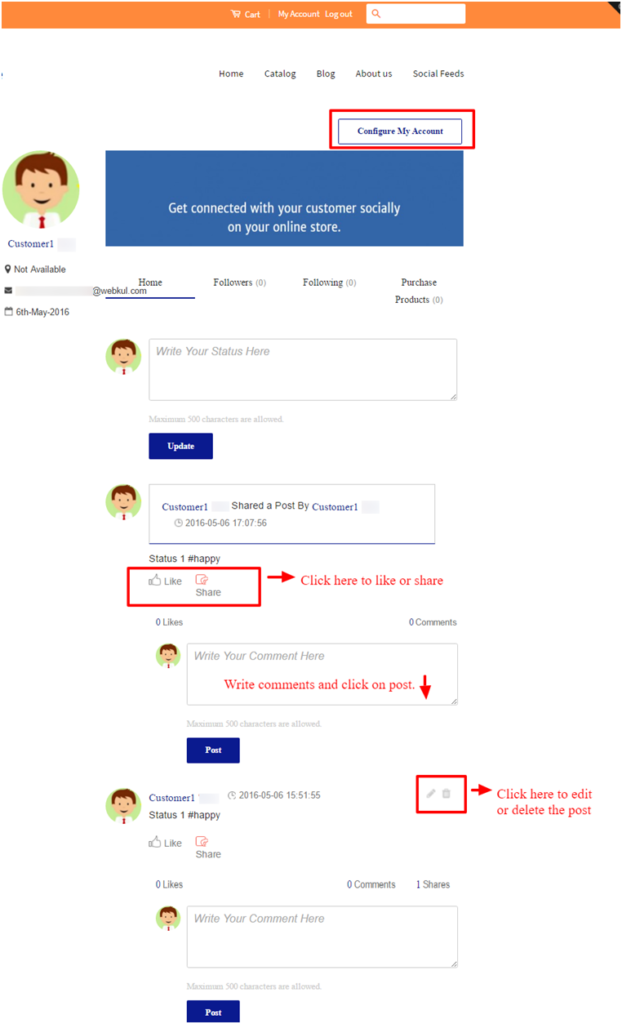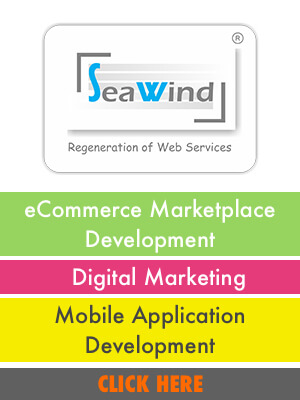What is the eCommerce Market?
E-commerce is a medium between two major parts of the online business market, the first is customer and the second is Sales. E-commerce marketing is making sales by creating and increasing awareness about an online presence, store’s product offerings, and brand. Ecommerce marketing is also raising consciousness about an online store’s product offerings and brand.
Market Size

The reports of Statista say And statistic gives information on retail e-commerce products sales worldwide industries from 2014 to 2023.
In 2019, retail online commerce purchases worldwide amounted to 3.52 trillion US dollars and online retails revenues are projected to grow to 6.53 trillion US dollars in 2022.
The Top online stores’ revenue amounted to almost 100 billion US dollars in 2017. Ecommerce Platforms is one of the most popular online activities worldwide.
The biggest online traffic in running through the eCommerce marketing sector in the google search engine. Ecommerce in the largest community in India USA china and japan.
eCommerce Business Model
Mostly Four types of Ecommerce Business Models have used the e-commerce Business industry. If you’re thinking to start an online eCommerce business, And Do you have no knowledge about the general categories in E-commerce.
Each has its best scopes and challenges, and many companies operate in several of these categories simultaneously.
Knowing what box your big idea fits in will help you think creatively about how what your opportunities and threats might be.
1. B2C – Business to consumer.
2. B2B – Business to business.
3. C2B – Consumer to business.
4. C2C – Consumer to consumer.
Ecommerce-trends
Are you looking what the future of e-commerce in this decade? Do you want to wander into what trends will shape and size the success of your online market store? Here we are numbering a few eCommerce trends for 2021 that you need to look out for.
1. Online Sales Growth is Unstoppable
2. Online Marketplace
3. Mobile Shopping is Growing
4. Rise of Voice Commerce
5. Increase in Mobile Payments
6. Environmental Topics Influence Buyers
5. Research The Basics Of Ecommerce Business
6. Hyperlocal Marketplace
7. Live Streaming Shopping
8. Group Purchase
9. ContactLess Delivery
10. AR Based Shopping-PWA Scan & Go
11. Social Commerce
The Basics Research Of Ecommerce Business
“At first we are research is the first critical step. Don’t operate off of a hunch. Growing any online business is an investment. Treat it as such.”
In this global market, there have a lot’s business structures and ideas for everyone similarly. Like Service-based business, software, digital product sales, and physical products are common examples.
Before you can turn on what to sell online, you need to fix and understand the different business models available.
There is not a skyrocketing technique, but it does describe your business structure.
In fact, eCommerce Business in 2021 is bigger, and also the world has merged business ideas of e-commerce stores revolution. And with over 1.92 billion people buying things online, an e-commerce store has a lot of potential buyers. This makes it a worthwhile endeavor for those wishing to find a good source of income.
So if you are wondering about the future of e-commerce business, keep reading on.
Future of eCommerce:
Ecommerce businesses have a lot of potentials and 265% growth rate, from $1.5 trillion in 2015 to $5.9 trillion in 2023. This shows a future of steady upward trend with no signs of decline. But, what’s even more interesting is the global eCommerce sales have been steadily eating up the worldwide retail market.
E-commerce in India
At present, India has a top internet user base of about 475 million as of July 2019, about 45% of the population. In 2016, the largest e-commerce companies in India were Flipkart, Amazon, Myntra, Paytm, and Snapdeal. In 2019, Amazon beat Flipkart and was recorded as the biggest e-commerce in India in terms of revenue.
E-commerce in International
International e-commerce is the business of selling a product through an e-commerce website to buyers in foreign countries. For traditional retailers, e-commerce can also serve as a testing ground to determine whether new, foreign markets will be successful before opening a physical location there.
Rise of M-Commerce
Mobile commerce, also known as wireless eCommerce, is any financial activity involving ownership by using goods and services, which is completed by a mobile device are wireless commerce.
In simple terms, mobile commerce is a medium between eCommerce and Mobile applications.
Ecommerce with AI
How AI is most valuable in Ecommerce and eCommerce platforms
If you want to create a personalized experience and Driving conversions remains the number one goal for all eCommerce businesses. Machine learning is allowed to optimize and customization all technical data and data about the customer. You can also optimize inventory management as well as Automate customer service.
Today’s online store has to be available 24 hours a day and on multiple channels perform. Automating customer support can save eCommerce businesses time, finance, and human resource. Besides, without staff from answering repetitive questions allows them to focus on more challenging requests. AI-driven personal assistants or chat-bots can easily carry the burden of answering all queries.
Hyperlocal Maretplace
Digital evolution is at its utmost and one can expect to reach new heights in the future. One such very exclusive evolution is the HyperLocal Marketplaces. It has completely changed the outlook of the global market.
Firstly, let’s see what actually a Hyperlocal Marketplace is. It connects the consumers with the local retailers that belong to the same geographic area.
We can also under the term in layman terminology, i.e. Hyperlocal On-Demand Delivery Service.
Why is Hyperlocal such a Buzzword: A well furnished Contactless Delivery Scenario
Recently, we all have been witnesses of a pandemic situation, COVID-19. Due to emergency lockdown in different parts of the world, there were individuals who were stuck in their places without house-help.

In such situations, Hyperlocal Services gained pace and served millions of customers around the globe. Through hyperlocal services their needs could be catered during immediate needs.
For instance, people who could cook food could order food online through food delivery apps, such as Zomato.
People who ran out of groceries could order it through the app from the nearby stores and it was conveniently dropped at their doorsteps.
Now when we know what pandemic has been all about, we are pretty much aware of the fact that we were strictly advised to keep a “No-Contact” with other fellow beings.
Hyperlocal furnishes a No-Contact, online payments and not only this, as people need not travel to physical stores for making a purchase and were delivered their orders at their porches, the Hyperlocal Marketplaces strictly abides with the Contactless Delivery scenario.
Hence, where our customers prefer convenient and hassle-free shopping, Hyperlocal Marketplaces is what they opt for nowadays.

Not only this, they can even avail some discounts and offers, rewards, offer on placing an order for the first time, etc.
Study reveal, the value of Hyperlocal Marketplace services market size was $1,324.2 billion in 2019, and as estimations reveal to reach $3,634.3 billion by the year 2027, and from 2021 to 2027 it could register CAGR of 17.9%.
AR Based Shopping- PWA Scan & Go
Another add-on to the tech-stack is the PWA Scan & Go.
One of the finest innovations facilitating the goods of Magento PWA Studio is the PWA Scan & Go feature.
It facilitates the customers’ to buy and pay for the items simply through a scan process. The product’s barcode is to be scanned using the Progressive Web App that is built on the top of the Magento Store.
As soon as the customers make the payment for the purchase, they shall get a QR code along with the order confirmation. It is further validated at the time of the customer’s exit.
Some of the features PWA Scan & Go associates with as follow-
- Swift Checkout- The customers need not waste time as they need not wait in the queue at the cash counter.
- Light-Weight Mobile Pages- As we know that PWA is extremely fast in terms of performance, therefore, user engagement factor increases,
- Enhanced User Experience- Scan and Go works on PWA therefore it doesn’t need any heavy native apps to function.

Group Purchase
The next one on the list is the Group Purchase feature.
Using this feature, a group of customers can make a purchase together.
The main purpose of this feature is that one can prescribe products and services to their friends, family, known, acquaintances, etc.

Not only this, they can earn and avail different attractive discounts as they recommend the products to others and buy products in attractive discounts.
Group Purchases are purchase scenarios or models through which the members of group buying websites use discount offers reaching others online, making payment transactions, and waiting till a persistent minimum number of people sign up for the same offer.
Once this is achieved, it confirms the transaction, and the voucher is sent to the e-mail addresses. Moreover, customers can also join existing groups or create new ones.

The Group Purchase feature is an extremely novel form of purchase in social e-commerce websites and is the future of digital evolution.
Social Commerce
Let’s sum it up with another very interesting feature, Social Commerce.
Social Commerce or Social E-Commerce feature as the name suggests utilizes the social media platforms to make the custom in-app shopping experience for customers.
In layman language, it helps introduce e-commerce functionality to social media platforms.
Let’s understand this scenario with a real-time example. As a customer, you purchase from a website or app and you had a great experience all throughout the shopping process.

It is obvious you would recommend and share your brand’s products and services on social media. Moreover, your brand gets more exposure, as social media is all about content distribution.
Social media is a sure-short medium for spreading word-of-mouth for your brand over social media. Subsequently, Social Commerce ensures to drive more customer traffic thus affecting the sales and revenue for your stores.







Post your comments
You must be logged in to post a comment.